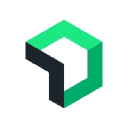 New Relic Software Engineer Interview Guide
New Relic Software Engineer Interview Guide
Overview
Getting ready for an Software Engineer interview at New Relic? The New Relic Software Engineer interview span across 10 to 12 different question topics. In preparing for the interview:
- Know what skills are necessary for New Relic Software Engineer roles.
- Gain insights into the Software Engineer interview process at New Relic.
- Practice real New Relic Software Engineer interview questions.
Interview Query regularly analyzes interview experience data, and we've used that data to produce this guide, with sample interview questions and an overview of the New Relic Software Engineer interview.
New Relic Software Engineer Salary
Average Base Salary
Average Total Compensation
New Relic Software Engineer Interview Process
Typically, interviews at New Relic vary by role and team, but commonly Software Engineer interviews follow a fairly standardized process across these question topics.
We've gathered this data from parsing thousands of interview experiences sourced from members.
New Relic Software Engineer Interview Questions
Practice for the New Relic Software Engineer interview with these recently asked interview questions.